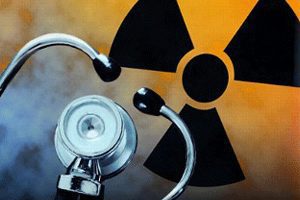
Environmental Medical Radiation Risks. In the wake of the Japanese nuclear disaster, much attention has focused on the dangers of environmental radiation. But the health risks posed by the trace amounts of radiation from Japan that have made their way into the U.S. are miniscule compared to what some people face due to overexposure to medical […]

Environmental Medical Radiation Risks. In the wake of the Japanese nuclear disaster, much attention has focused on the dangers of environmental radiation. But the health risks posed by the trace amounts of radiation from Japan that have made their way into the U.S. are miniscule compared to what some people face due to overexposure to medical radiation – especially children.
For example, according to a report from the Baltimore Sun, a study published this month by Cincinnati Children’s Hospital found that between 1995 and 2008, the use of CT scans in children increased fivefold, from 330,000 in 1995 to 1.65 million studies in 2008. A single CT scan exposes patients to the same amount of radiation as 400 chest x-rays.
Why is this increase occurring? According to the Baltimore Sun, there are various reasons. For instance, as physicians are pressured to see more and more patients in a shorter time frame, they are more likely to rely on scans than traditional diagnostic methods. Liability issues also play a role in the use of medical imaging, the Sun said. This past February, for example, a survey conducted by the American Academy of Orthopedic Surgeons found that about 20 percent of the surgeons who responded ordered the study purely “for defensive reasons” – i.e. concerns over malpractice lawsuits.
In other instances, physician conflicts-of-interest and concerns over decreasing insurance reimbursement rates for patient visits may tempt some doctors to refer patients for imaging tests at facilities in which they have a financial stake. And finally, some physicians just don’t understand the risks posed by medical radiation. For example, a 2004 study of emergency department doctors found less than 10 percent were aware that a patient’s lifetime risk of cancer increased from a CT scan, according to the Sun
According to a recent report from Newsinferno.com, there are some precautions parents can take to make sure their child is not being subjected to an unnecessary CT scan. These include asking if there are alternative diagnostic means available; checking to make sure the radiology department is accredited by the American College of Radiology; asking technicians to ensure that vulnerable areas such as eyes, thyroid, breasts and reproductive organs are protected from radiation to the greatest extent possible; and seeing to it that the scan is not a duplicate of one performed earlier or at a different facility.
The personal injury attorneys at Parker Waichman LLP offer free, no-obligation case evaluations. For more information, fill out our online contact form or call 1-800-YOURLAWYER (1-800-968-7529).


